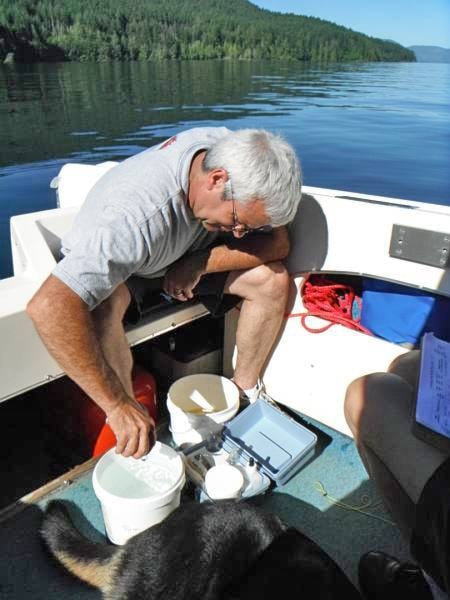The Cowichan Lake and River Stewardship Society is excited to be teaming up with the CVRD, Cowichan Tribes, B.C. Ministry of Environment, and federal agencies to begin a water quality initiative in the Cowichan watershed.
The CVRD announced this partnership and project on Aug. 15. However, the members of CLRSS were told about it at their annual general meeting on July 29.
President Gerald Thom, explained that though the group does regular testing of the water in the Cowichan Lake, and shares that information with the province and the B.C. Lake Stewardship Society, this $200,000 project takes it a step further. In fact, all the way down the Cowichan River.
“This is a three year, comprehensive water monitoring program which includes both surface and groundwater in the entire Cowichan watershed. The project will link land use to water quality through area based planning, support by science based monitoring, regulatory compliance, and shared stewardship,” Thom explained to CLRSS members at the AGM.
The CLRSS will not be involved too much this year, says Thom, because the lower part of the river will be tested first. However, next year, when the project moves to the upper section of the Cowichan River, CLRSS will be calling for volunteers to help out.
Thom says that the testing is starting on the lower part of the river because of several issues that have been identified.
“There were some specific problems down around Duncan and in Cowichan Bay,” says Thom. “Specifically a fish kill in what they call ‘fish gut alley’ which is an area that we’ve really been working hard to restore.”
Thom explains that a rainfall occurring when there was fry in this section of the river caused storm drain runoff and subsequently killed off the fry.
“So they’re trying to determine now where the problems were coming from,” says Thom. “And this is a part of the solution.”
The CVRD adds two other issues that need to be addressed, including the Cowichan Bay shellfish closure that has been in place since the 1970s due to contamination, and general water quality problems related to cumulative impacts of turbidity, nutrients, and bacteriological contamination, particularly in the lower Cowichan and Koksilah Rivers.
“Those are the issues that led us to establish our two water quality targets,” said Rob Hutchins, co-chair of the Cowichan Watershed Board, along with Chief Harvey Alphonse. “Simply stated, the first target is clean water. We need to meet provincial standards for surface water quality.”
“The second is to be able to eat shellfish from the Cowichan estuary by 2020,” said Chief Alphonse. “The clam beds in Cowichan Bay are incredibly productive but the clams aren’t safe to eat — it’s shameful. Those clams are the canary in the coal mine. When we can eat them again we will have come a long way toward cleaning up this magnificent watershed.”
“An extensive sampling program will be conducted during the key periods of summer low flow and the fall flush,” said Thom. “The water samples collected by volunteers will be tested for total suspended solids, turbidity, metals, nutrients, and microbiology in order to quantify ecosystem health. The third year [of the study] will combine all data into a comprehensive water quality plan.”
Testing began in mid August.
